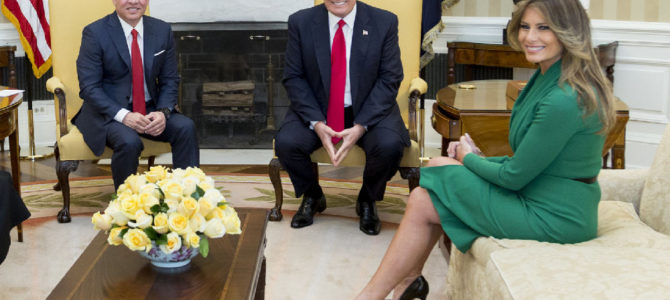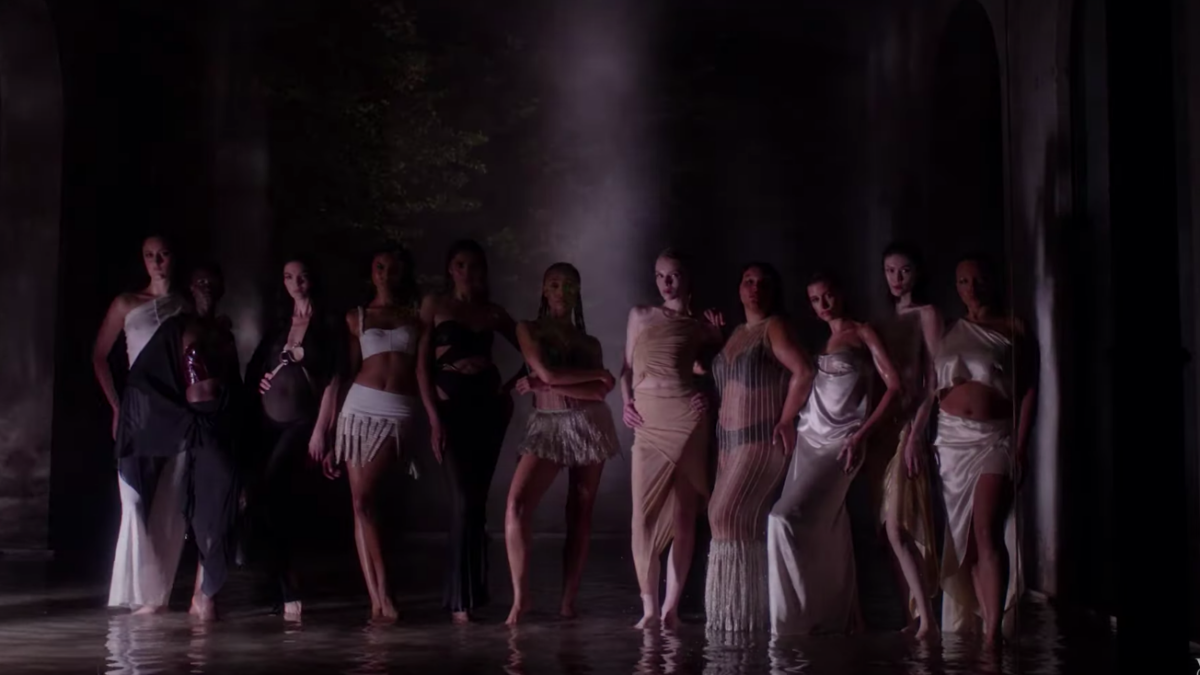
How dare she wear stilettos! That’s what we’ve been hearing since Melania Trump boarded Air Force One wearing a pair of fashionable heels to visit victims of Hurricane Harvey. Over-reaction doesn’t quite capture the mania that ensued, especially since she changed into sneakers on the plane—and they weren’t $540 sneakers by a French designer like the pair Michelle Obama wore to a poverty event in 2009.
As with most reactions to Trump, controversy doesn’t just pop out of thin air. Melania’s stilettos were the target of the liberal fashion police before this most recent “transgression” on the tarmac. The outrage has little to do with appropriate attire and more to do with mean girls being mean and the never-ending effort to paint Trump as a sexist.
The Mean Girls Are Out in Force
In early August, Nina Burleigh wrote a column in Newsweek about Melania and Ivanka’s shoe choices that could have been a page torn from a mean girls playbook. She called the “ubiquitous stiletto pump” worn by the Trump ladies a “minor Trumpian trend” that’s not in fashion (zing!), normalizes the “footwear of the beauty pageant,” and is a form of patriarchal, sexist oppression. She also threw in a reference to Barbie just for spite.
“Stiletto pumps are the ultimate test of a certain type of femininity,” Burleigh writes. “They signal the taut combination of power and weakness that conservative women must cultivate in order to survive among ideologues who are crafting our tax-free ‘Handmaid’s Tale’ future.”
That’s rich coming from the journalist who noticed President Bill Clinton eyeing her legs on Air Force One in 1998 and told the Washington Post, “I would be happy to give him a blowjob just to thank him for keeping abortion legal. I think American women should be lining up with their Presidential kneepads on to show their gratitude for keeping the theocracy off our backs.” So, consider the source.
In her article, Burleigh cites an anthropologist who maintains that wearing heels is akin to a mating ritual. “High heels thrust out the buttocks and arch the back into a natural mammalian courting—actually, copulatory—pose called ‘lordosis.’ Rats do it, sheep do it…lions do it, dogs do it. It is a naturally sexy posture that men immediately see as sexual readiness. [Heels] are a ‘come-hither’ signal.”
Shoe historians, Burleigh writes, confirm this perception: “the first women to wear heels were Italian prostitutes in the 17th century, when they adopted them, along with smoking, from their male friends. From there it became a sexual symbol. The high heel was a staple of Victorian porn, and the stiletto (‘dagger’ in Italian) was introduced into women’s fashion in the 1950s. It has remained there, waxing and waning à la mode.”
Get Your Fashion History Straight
The problem with Burleigh’s argument is this is only a fraction of the story. To begin with, the first women to wear heels were not prostitutes in the seventeenth century. Both men and women of noble birth wore heels in ancient Egypt to set them apart from lower classes. Height was (and still is to some degree) a sign of power.
While it’s true that courtesans of the sixteenth century (not seventeenth) adopted high heels, the reason they did so was to look more like men. These high-class prostitutes were allowed access to male society traditionally denied to other women. Because of this, they assumed male-oriented practices and styles, including wearing pants, to fit in with the guys.
Historically, men wore heels for a variety of reasons. In fifteenth-century Persia, military equestrians wore heels because it secured their footing and allowed them to shoot arrows more easily from horseback. Heels during this time were a function of war—a symbol of “toxic” masculinity.
Aristocrats wore heels to elevate them from the muddy, bacteria-infested streets and to make them taller, adding to their sense of superiority. In the French court of the eighteenth century, heels were a symbol of power and authority. Louis XIV always wore high heels because he was only 5’4”. Anyone who tried to imitate him without his permission was thrown out of the court.
Heels didn’t become sexualized for women until the nineteenth century, when French porn photographers put models in heels because they lifted their butts. Even today, women wear high heels for this reason—and they like it.
Heels Are a Sign of Empowerment
In our modern day of applauding reversal of gender roles, we should be celebrating heels as one of the first gender-bending success stories. Women wrested heels from men as an act of empowerment, not as acquiescence to male oppression. They took the high heel and made it their own, sexuality and all. With the stiletto, they’re tall, dominant, and, yes, sexy!
Feminine sexuality is a power all its own, used to influence, control, intimidate, and manipulate men. Just consider a study in which men were more likely to help women on the street who were wearing heels. Simply put, men are easily swayed by sex. The more beautiful and sexy the woman, the more men want to do her will. Women like having sexual power, and they wield it in areas where they need to be powerful—in the workplace, in entertainment, and in politics.
Burleigh says wearing heels is a balance between power and weakness. Nothing could be further from the truth. Women like Melania who wear high heels aren’t trying to survive among conservative ideologues who want to control them. These women are in command of their own lives.
Criticize Melania for not donning her sneakers before she got on the plane, but she’s hardly wearing heels to survive. She’s wearing them because she chooses to do so. Because they empower her. I would think all women would celebrate that.









